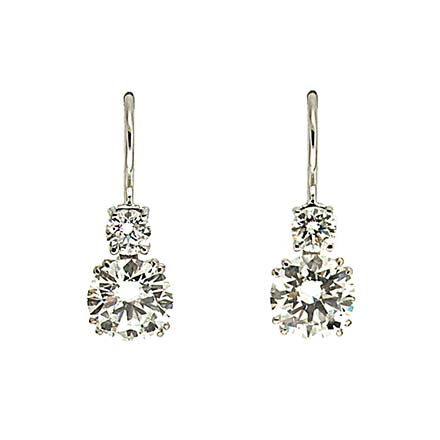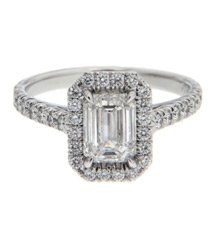Variations on a Diamond Shape
 When looking for stones for your diamond rings, you’ll often hear the word “cut.” Squares, hearts and ovals may come to mind, but a diamond’s shape and cut are not the same. The former is the outline of the jewel. The latter refers to how the stone is designed and faceted. Circular diamonds aren’t always round brilliants, sometimes they’re fancy cut rounds.
When looking for stones for your diamond rings, you’ll often hear the word “cut.” Squares, hearts and ovals may come to mind, but a diamond’s shape and cut are not the same. The former is the outline of the jewel. The latter refers to how the stone is designed and faceted. Circular diamonds aren’t always round brilliants, sometimes they’re fancy cut rounds.
The round brilliant diamond premiered in 1919 after years of research. Marcel Tolkowsky published a dissertation on how to make diamonds brighter than ever before. By adhering to specific measurements and the right faceting, cutters could unlock more brilliance.
To this day, round brilliants are a beloved cut. Round brilliant cut diamond engagement rings are bestsellers. They appear as the central jewel in rings, or add brilliance as side stones. At their smallest, they appear in pave or micro pave diamond bands.
Fancy brilliant rounds don’t follow the standards of round brilliants. The latter contains fifty-seven to fifty-eight facets. Fancy rounds may play with this amount to alter the jewel’s brightness. Other kinds have facet patterns far different from the round brilliant. These stones often have different cut names to distinguish themselves from the round brilliant.
Round brilliant cuts have strict standards. When they’re graded for certification, gemologists know what to look for to determine quality. Other types like fancy rounds have more flexible ideas on cut. This makes it harder to gauge how well they’re made. Round brilliants are more likely to be graded than their fancy counterparts.
If you’re seeking a round brilliant cut for your ring, there are many styles to choose from. Solitaire diamond bands have elegant simplicity. Three stone rings represent the past, present and future of a couple. Eternity diamond bands are surrounded with gems. There are designs for every taste.





